This light-hearted article is dedicated to all lay Plum Village practice sanghas and their facilitators, who are finding creative ways to support and nourish themselves in these challenging times.
In February, when the monastics of Plum Village went to the European Institute of Applied Buddhism (EIAB) in Germany to participate in its annual monastic retreat, long-term residents of Plum Village stayed on-site as keepers of the community. This is the second year in a row that we organised a ‘lay retreat’ in Plum Village France.
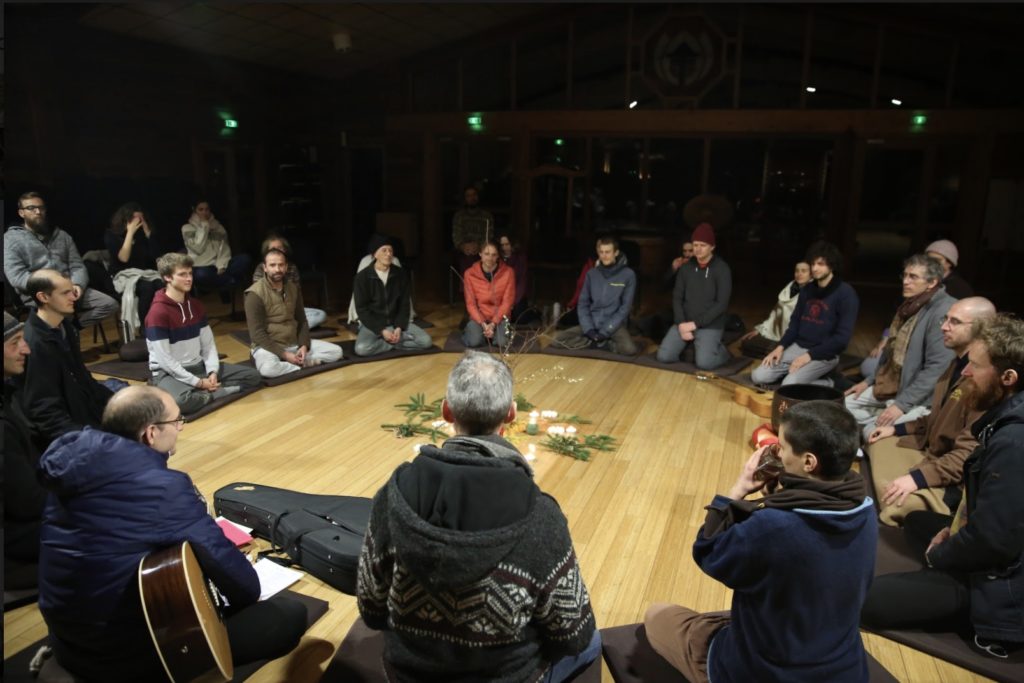
Baby Buddha will grow up
From the 14th to 23rd of February, 2020, long-term residents were in charge of Plum Village’s Upper Hamlet. For some, this inspired a feeling of responsibility and space, but for others it prompted some fear and anxiety. As Sullivan, one of the residents, explained: “At the beginning I thought it was going to be difficult to stay in the energy of the practice. For me, the presence of the monastics is a true support. However, after a few days I realised that we were all embodying the practice. I was surprised to see how well we were able to generate together beautiful energies of mindfulness and stillness”.
In a sense, this transfer of responsibility was an experiment, allowing lay residents to experience being organizers and directors of their own retreat. With the theme “Sorority and fraternity”, the forty-five long-term residents managed all aspects of the retreat. They took on the responsibilities of chanting during sitting sessions, leading walking meditations, and inviting the bells.
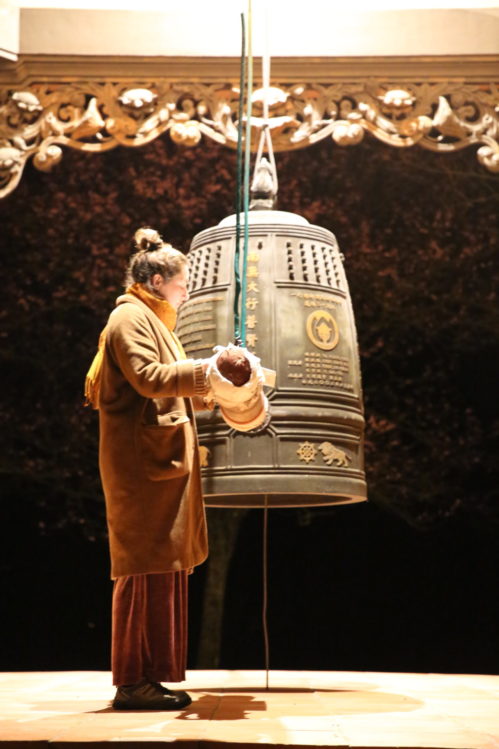
Noémie, a long-term resident, described one of the most beautiful moments of the retreat for her: “For me, the first day was unforgettable, as I had the opportunity to invite the big temple bell, which might never happen again! I had no idea how to do it. My best friend joined me to be my support. We woke up at 5 am, tired but filled with joy and expectation. We sang together, taking refuge in the Three Jewels, the Buddha, and the Bodhisattvas. I really felt we were making an offering to the whole universe and that we were not alone. It was a sacred moment for both of us.”
Before this retreat, a survey had been conducted to determine needs of the community and gather ideas for future retreats. Using this information, Lucile was able to offer a creative approach to one practice : “I had the opportunity to offer my first total relaxation. At the beginning I was stressed, but with all the joy that I felt, I decided to improvise and play my flute, really, a first time for me!”
Watering the flowers
Retreatants tailor-made the retreat, offering workshops on shiatsu massage, games, and kung-fu. But a “red thread” activity that especially touched most of the practitioners was “watering the flowers”. This Plum Village practice was presented in a unique way. Envelopes with each retreatant’s name were hung on a line in the dining hall. Small pieces of paper and pens on a nearby table allowed everyone to write a word and leave it in the envelope of his/her choice. Fabio, another long-term resident, very much enjoyed this practice: “Over several days, the dining hall table was transformed into a love factory. Everyone wrote something, constantly producing love in writing. It was truly magnificent”.
At the end of the retreat, each person gathered his/her full envelope and opened it to discover all the flowers that had been left for them.
The residents organized a session of games to know each other better and break the ice: “I started this retreat quite tired. At Happy Farm, we worked a lot. These games refreshed me, and I was able to connect with others. This helped me to have a good start of the retreat,” explained Matt.
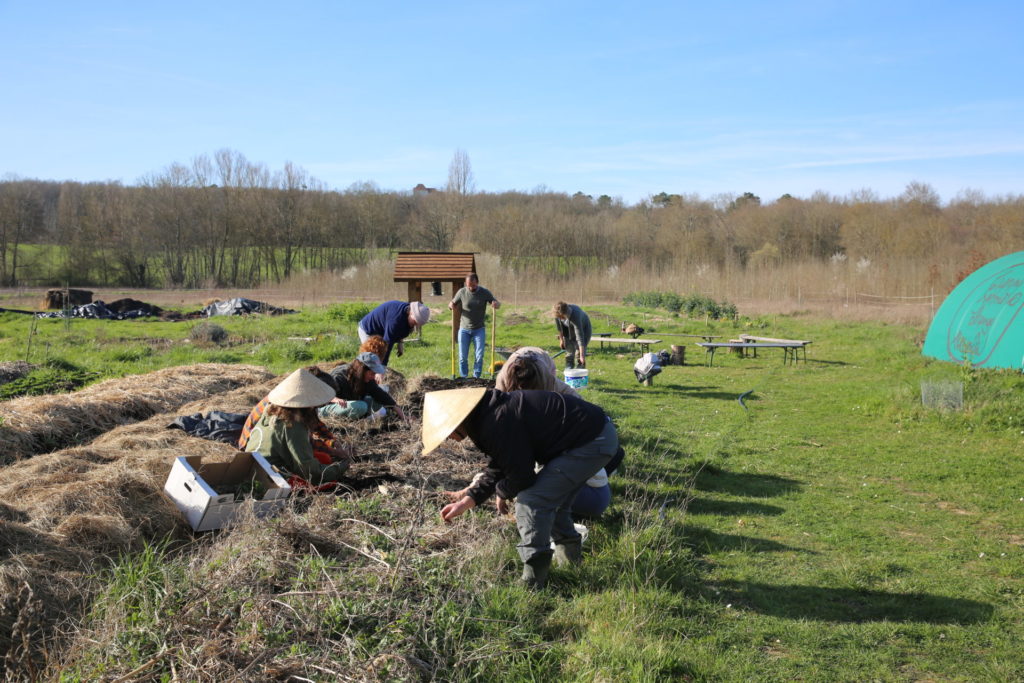
In addition, one day was dedicated to “Planet Earth,” and included a teaching on this subject and an afternoon at the Happy Farm of Lower Hamlet with a walking meditation across its fields and woods.
Spring was slightly earlier than usual this year, and we celebrated the daffodil festival — flowers that our teacher, Thay, loves. The daffodil festival allowed long-term residents to practice together and honor Nature’s spring bodhisattvas.
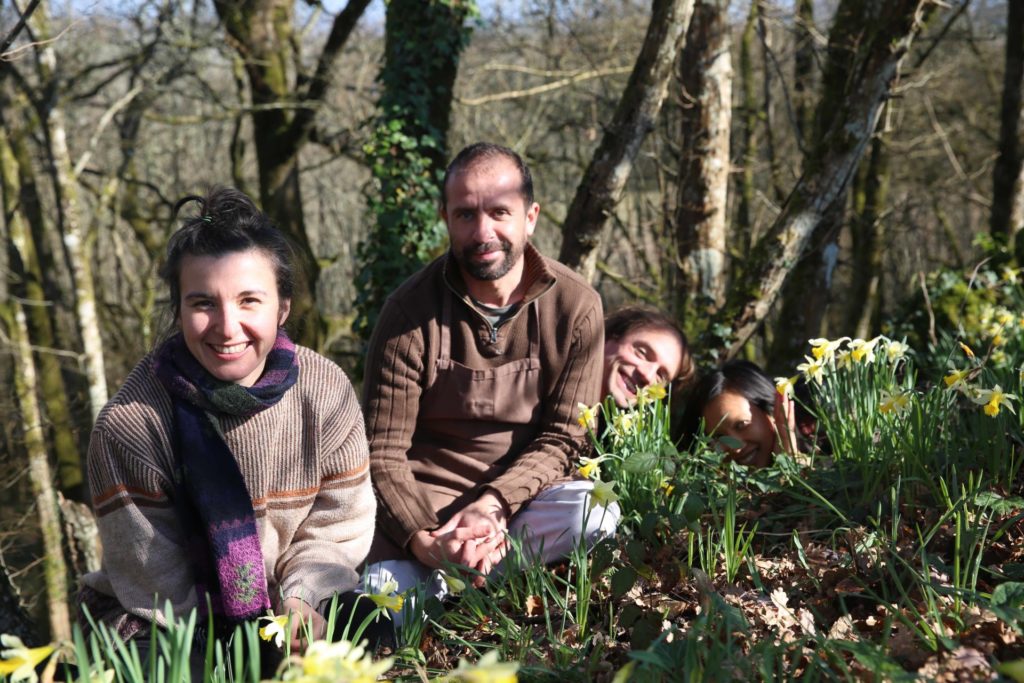
The secret of a successful retreat: an organizing team in harmony
Many long-term residents volunteered to be part of the organizing team for this retreat. The team met several times beforehand and discussed the overall plan, team rotations, as well as the activities to be offered. The primary challenge, of course, was that the long-term residents were totally inexperienced in planning and conducting such retreats. This was a challenge for Mark, for example, who relied on his practice to change his perceptions and feelings about the tasks he faced: “I felt a lot of fear at the beginning of our meetings, this is why I joined the team: to face and practice this anxiety. I was scared we wouldn’t find enough experienced people to cook. But after a few days, I was happily surprised by the delicious dishes that we prepared!”
Every morning during the retreat, the four members of the “Organizers’ Sangha” would meet at breakfast to discuss and share about the program of the day. “For me, our meetings were more like a sort of meditation and it was great! We would begin with a few minutes of silence and then share our ‘internal weather forecast’,” explained Emerson. Charlène found a real space for trust and freedom during these meetings: “We would be very attentive to each other. Everyone had space to express their opinion and listened to the others without judgement.”
“I remember that during one meeting, we laughed for forty minutes!” added Mark, “and I thought, it’s OK. The retreat will flow. There is harmony and a lot of joy between us, we are going to make the most of our retreat!”.
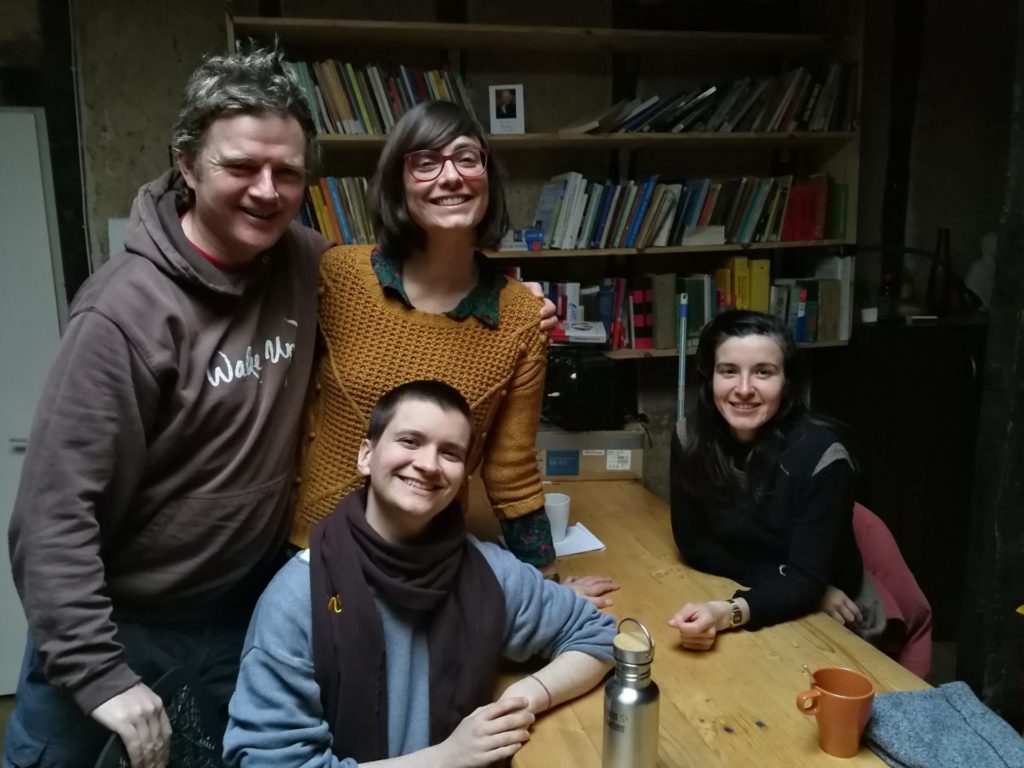
The harmony, the togetherness among the long-term residents was an essential condition for the happy process and success of this lay retreat, said Emerson: “This retreat made me very happy. In fact, it was my best retreat! We were lucky to receive the instructions of the monastics. The secret, I think, is to nourish union and harmony and have a bell!”
“We would like to thank the monastic community for their trust and for letting us, ‘like grownups’, take care of Upper Hamlet,” added Charlène, with gratitude.
Transformation and healing
For most of the long-term residents, this retreat planted beautiful seeds. Some of them talked about the healing and transformation this effort brought about, thanks to the deep collective energy involved:
“I guided several chants and meditations. The energy of trust and the knowledge that it is OK to make mistakes, allowed my inner child to rejoice and heal” said Fabio.
For others, supportive friends were a great motivation and reward as well: “I saw people I love facilitate, and I know how stressful it can be. Just to be there, seated, present with them, gave me a lot,” explained François. “During this retreat, I felt a great freedom. My inner child waded in the mud during the walks, a very viscous and interesting experience!” added Noémie.
In the end, this second retreat led by long-term residents was an achievement with lasting rewards, leaving those residents with activities and responsibilities that they would like to continue to nurture during their year at Plum Village and flowers they would like to water. “I would like us to take care of the monastics, not always them taking care of us, but also for us to be more involved in our respective hamlets. We will keep on watering the harmony of the long term resident sangha,” said Charlene, smiling.
And, regarding his experience, Matt concluded: “It was like when you’re young — when you learn to cycle and take off the small wheels. it’s very gratifying!”.
Article by Aurelie Tolat
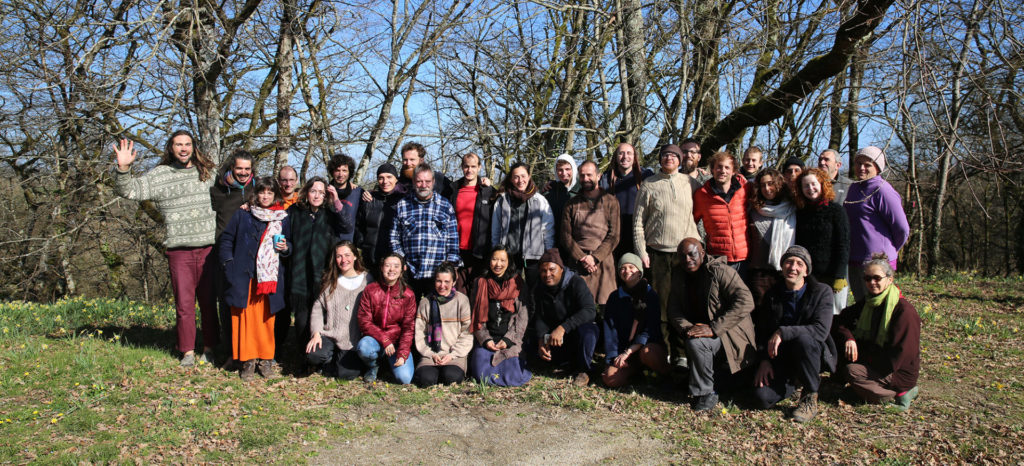



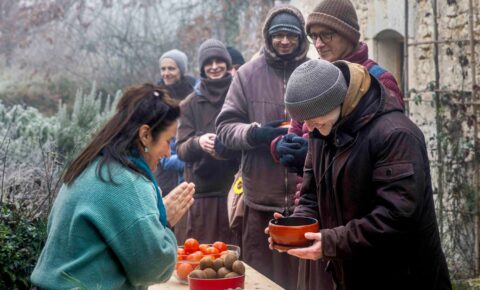
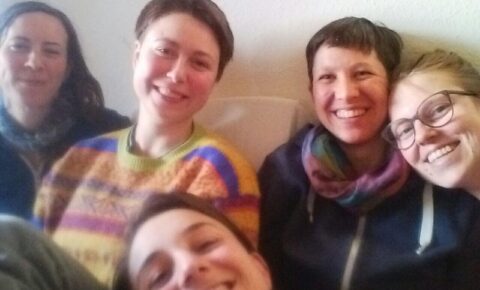
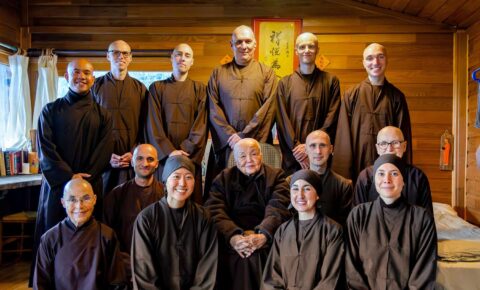
Share Your Reflections